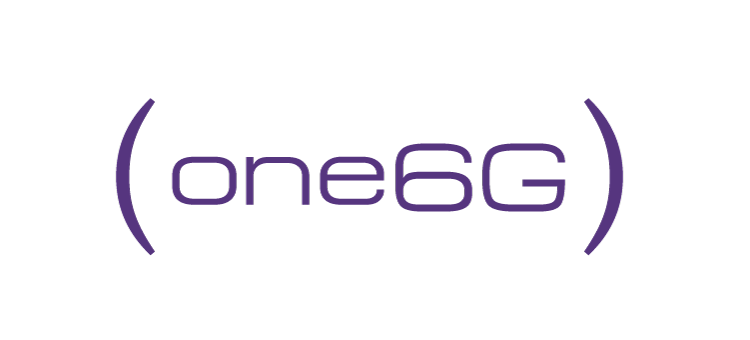Open Lecture 9 “6G for eHealth” – Event report
The long-awaited Open Lecture 9 took place on October 17, 2024, featuring five top-class speakers who presented and discussed visions, potential, and open challenges of the future 6G mobile radio system tailored for the eHealth domain. The lecture covered topics, such as vital sign wireless sensing for medical applications, model-based medicine, promising medical robotics applications, an ecosystem to facilitate secure exchange of health data, and the potential 6G use cases from an eHealth perspective.
The event was a great success, having gathered 100 participants from more than 20 different countries. The audience generated over a dozen insightful questions, some of which can be viewed below the event recording and the slides presented by the Open Lecture experts.
- Contactless Vital Sign Sensing for Medical Applications (PDF available here)
Fabian Michler, Co-CEO & Co-founder, Sykno GmbH - Rehabilitation Robotics (PDF available here)
Emmanouil Spyrakos-Papastavridis, Senior Lecturer in Engineering, King’s College London - European Health Data Slice: Connecting European Health Data Spaces (PDF available here)
Christoph Thuemmler, Chief Medical Officer, 6G Health Institute - Model-Guided Medicine
Dirk Wilhelm, Chair of Research Group Minimally invasive Interdisciplinary Therapeutical Interventions (MITI) - 6G and eHealth: Use Cases and Potential Service Requirements (PDF available here)
Jose Perdomo, 6GeHealth one6G WI Rapporteur
Q to Fabian Michler: Are there any adverse effects from using radar-based monitoring over prolonged periods of time?
Since we do transmit at a very low power and most of the energy is reflected right at the air-skin-interface, we can guarantee that there are no adverse effects. The systems comply with all regulations, which also regulate the emissions from cellular signals, WiFi, radio and TV broadcast and so on.
Q to Fabian Michler: What frequency has been used in the presented examples?
The examples I showed used a transmit frequency of 24 GHz, which is a license-free band. Another option is, for instance, the 60 GHz band. Going lower in frequency typically decreases your measurement resolution, going higher in frequency will make the measurement less robust against body movements. So the range between 24 and 60 GHz is some kind of a sweet spot.
Q to Fabian Michler: Is it possible to acquire the ECG graph itself with a radar sensor?
No, this is not possible: The ECG is the electric excitation of the heart muscle and the radar system captures the physical response (i.e., the resulting movement) of the muscles.
Q to Fabian Michler: How do you handle potential disturbances by other people in the field of view? What if pumps or other medical equipment with vibrating monitors are in the field of view?
In our case, we installed the sensors underneath a patient bed (right under the mattress) to make sure there’s nothing between the patient and the sensor. We did not have tests so far with two people lying in one bed. But a solution might be using several sensors under the same bed, which can then separate the vital signs of the different people by their limited field-of-view.
Q to Fabian Michler: What’s the average distance between patient and the sensor? Can it be used in the home environment? Any issues with positioning of the person w.r.t. to the sensor?
For the most accurate results, we require a small distance (10cm-50cm). We could show that it does not matter if we monitor the person from the front, side or even from the back (=different lying positions in bed). If you increase the spacing between system and person, it is still possible to measure mean respiration and heart rates, but you will certainly lose accuracy.
Q to Fabian Michler: If EM wave doesn’t pass to body than how can we find heart sounds from opening and closing of heart atriums, as these vibrations do not pass to the chest?
The EM wave does not penetrate the body. But whenever the valves open and close, their vibrations will be present in the entire chest area and on the surface (like a tiny earthquake – also called seismocardiogram). When the doctor uses a stethoscope, they pick up these surface vibrations (the same we measure), transform them via a membrane into an audible signal they can hear.
Q to Emmanouil Spyrakos: What are expected telecom KPIs for exoskeletons?
We would firstly need to ensure that we could achieve hard real-time control, at dedicated bandwidths of around 1 kHZ or more. It would also be essential to ensure minimal packet loss, but I am unable to quanify the allowable packet loss rate at this stage, given that my primary focus is robotics. However, we are actively looking into this with the telecoms experts.
Q to Emmanouil Spyrakos: The system presented by you is clearly very costly, being a serious issue for e.g., NHS to support financially such rehabilitation. Does it offer significant benefits over other, less physically assisted rehabilitation methods, such as using monitored (physio sensing and motion tracking) serious games (Virtual/Augmented)?
We do believe that it might be possible to produce each one of these envisaged exoskeleton units for less than £20k, and, given that they will be reusable, this might save the NHS millions of pounds per annum. By providing insufficient levels of physical assistance from the outset might make it impossible to improve the neuroplasticity of the patients’ lower limbs at the early stages, in order to allow them to transition to a stage where less physical assistance might be a viable option.
